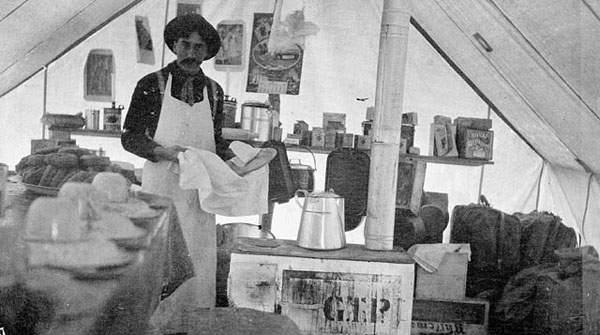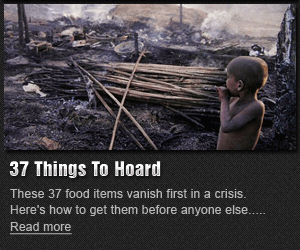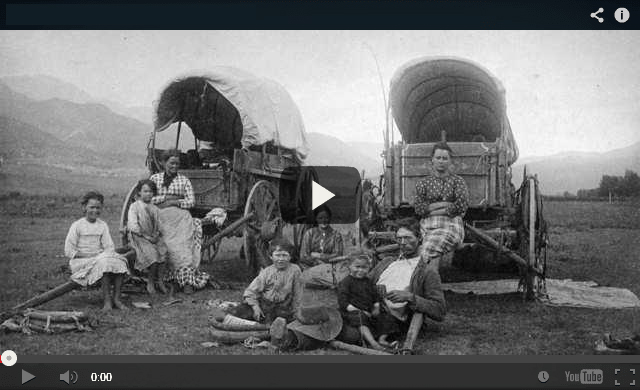For a while I debated which animal to breed for food. I considered chickens, rabbits, ducks, geese, and a few larger types like goat. After some research I decided for rabbits for many reasons. Very easy to fed , they breed and grow fast, they don’t need very much space, the rabbit meat taste very good and the rabbit fur have a lot of uses.
Growing rabbits for meat is a very productive enterprise. When our children were small we lived in a small town, on a small property and we decided to experiment with growing NZ White rabbits for meat. It was a great way to put meat on the table for a relatively low cost and not only is it reasonable in price, home grown rabbit is delicious, it isn’t gamey and most people say it tastes just like chicken. I think it is much nicer than chicken. This year we decided we would get back into it. The search began for rabbits and all the accessories we would need. In this blog I hope to outline what you need to know about rabbits, how to house them, and how to feed them, and best buys for those interested in getting into small scale rabbit production. (The first photo shows the does corner with the middle doe due any day to have her babies and the other two with their babies. The second photo shows the buck Bobby and the last photo is a picture of ten rabbits hanging in the shed).
We decided to go with our old model for starters and aimed to get three does and one buck. We watched patiently on trademe for cheap hutches and rabbits and now we now have a great little production thing happening.
Current rabbit status: We have one doe due to have a litter in a couple of weeks. Two does have six rabbits each that are about a week old. We have ten rabbits that have just about reached the ten week cull age and six other rabbits that are about seven weeks old. It’s all go. We enjoy them as babies and because there are always babies growing we don’ t miss them when they are gone.
Three areas this blog will cover:
- Things you need to know about rabbits.
- Housing rabbits.
- Feeding rabbits etc
1. Things you need to know about rabbits.
Rabbits breed like rabbits. Seriously you need to know this. We have one buck. You always take the doe to the buck, he does his business and then you put the doe back in her cage/hutch. If she isn’t interested in the buck at that time. Give her a 20 minute rest. Take her back to him and all that needs to happen will happen. If he falls off her his business is done.
28-31 days later she will be giving birth to anything from three to eleven babies, we have had rabbits that have had as little as three and as many as eleven but sometimes in a big litter a few don’t make it. The mother can make a nest a week early and sometime just the night before she has her babies. We always provide her a good supply of hay and it is fun to watch her gather mouthfuls as she starts to nest. Some mothers pull their fur early but generally most of them pull large amounts the day before.
You need to provide a bit of a box with an edge on it for nesting that is sheltered so the babies don’t roll or fall out until they are old enough to find their way back. The rabbits when they are first born are completely bald, they grow really fast and within ten days they turn completely white and open their eyes.
Rabbits milk is very nutritious. They say it has the highest calories of all mammals milk. Rabbits are only fed twice a day. The mother stands one the rabbits for about five minutes at dawn and dust and very rarely will you see this happen. The rest of the time the mother leaves the babies to themselves.
Sometimes you loose a few babies. It does pay to check them occasionally. When we had the big snow we found two babies had got separated from the others and had got a little cold. We bought them inside wrapped them up and put them on an oil heater to warm up. One survived the other was too far gone. Because they are only fed twice a day that particular rabbit probably didn’t miss out on too much of its mother’s milk.
You can tell if the babies (kittens I think is the official term) are healthy by looking at their body shape. Their heads and tummies should all be about the same size to begin with. I don’t know if that makes sense but that is how we check them. We have never had to try and get a different mother to adopt other babies but apparently it is quite easy to do if necessary
Sometimes mothers do stupid things if they are alarmed by unexpected incidents. We had one mother who killed her babies when there was an electrical storm. Whether she accidentally stomped on them in fright we don’t know but that was in our earlier years of raising rabbits and was a one off incident.
After about two weeks the mothers allow the babies to hop around and they start to learn to fend for themselves. We have a mother who sends her babies back to their nest the minute anyone comes around and another mother who encourages her babies to learn as much as they can as fast as they can. Mothers can be a little defensive but generally they are pretty easy going.
We ween our rabbits at four weeks and by this time we have seen them eating and drinking water and know they are ready. By this time the mothers are also sometimes a bit over mothering them. Often on the day they are weened we mate them. You can mate the mothers an hour after they have given birth but we don’t do this. It seems a bit excessive. We have mated them when they have babies two weeks old but think that it is better to give them a bit of a rest before they have their next litter. There is a balance between keeping the production going and not wearing out your breeding stock. We think two years is about the right length of time to keep the breeding does and buck but we will experiment with this as we are not really sure how long they will keep producing.
As far as immunization goes, we haven’t. We decided to keep the rabbits in an area that is well contained and hopefully no wild ones will break into the area and cause us problems. Even if a rabbit got into the enclosure most of our rabbits are off the ground so we don’t really anticipate problems, but realistically it could happen that one day we will have to think more about this. For us it is about cost and also our health. I don’t want to eat immunized meat. If we have to, we might consider immunizing our breeding stock but at this stage we have no reason to consider this.
2. Housing rabbits.
The whole aim of growing meat rabbits is to make it happen as cheaply as possible. We have managed to build and buy hutches at relatively low prices. We have one hutch that was once a dog kennel. When we started out breeding rabbits a lot of our hutches were metal cages but we have found the quality and thickness of the metal that is readily available to buy today is quite hard on the rabbits hocks when it is used as flooring and so we have opted for wooden floors that we cover with sawdust. We have just drilled holes in the floors so that they drain a little better and the floors stay drier for longer.
The does all have slightly larger hutches as we try to give them a bit of room to spread out. When it comes time to having babies the rabbits need somewhere safe to have their babies. For one of our rabbits that means securing a wooden box into the corner of her hutch, our other two have little houses with wooden edge on the doorway. We clean out their houses or cages weekly or sooner if necessary. We anticipate that now we have got around to providing drainage that the rabbits that weekly will be fine. When we had rabbits in cages in the past we had them hanging of a shed wall and we found that there was very little that we needed to do except every once in a while scooping up their waste pile and taking it to the compost heap.
3. Feeding rabbits etc.
We have always used pellets as the rabbits main source of food. Generally we allocate a cup of rabbit feed to each rabbit. Mothers often get two to four cups depending on whether they are pregnant, feeding their babies or teaching their babies to eat. Occasionally when we are low on pellets we have given them large feed of fresh grass hand picked but never lawn clippings! Lawn clippings are too rich and I think would cause bloat or stomach problems. Rabbits don’t do well on lettuce and brassica leaves – surprise, surprise. It can also cause them stomach problems so be careful with your household scraps. Once a week I might give them a comfrey leaf but research says whilst they like them too much is not good for them. We give our rabbits hay regularly and sometimes the babies prefer that. It is good to keep the supply of hay up in the cage.
We are experimenting with making home made silage from lawn clippings at the moment. We did a bit of online research to see how to go about this and our first bag is made and we will cure it for a four to six weeks and then see how it turned out. The thought that lawn clippings would cut down our pellet bill really excites me because we go through a good amount of pellets. Anything to reduce costs and make the whole rabbit journey a cost efficient one.
If you have endured this blog to this point and decide you want to try growing rabbits for meat don’t hesitate to ask any questions. When I first started writing this blog there rabbits nearly ready for the freezer. Today was the day, and we now have ten rabbits hanging in the shed overnight. In two to three weeks there will be six. Then in another seven weeks there will be twelve more. One doe is due this week thats another six in ten weeks and the cycle goes on.
We are careful when we talk about breeding rabbits for meat because it offends some peoples sensibilities, but for us it is about reducing our cost of living and eating healthy. I hope this blog inspires some of you to think about giving it a try.
Survival Food Prepping Ideas/ULTIMATE Top Skills 2017
Discover how to survive: Most complete survival tactics, tips, skills and ideas like how to make pemmican, snow shoes, knives, soap, beer, smoke houses, bullets, survival bread, water wheels, herbal poultices, Indian round houses, root cellars, primitive navigation, and much more at: The Lost Ways
The Lost Ways is a far-reaching book with chapters ranging from simple things like making tasty bark-bread-like people did when there was no food-to building a traditional backyard smokehouse… and many, many, many more!
Here’s just a glimpse of what you’ll find in The Lost Ways:
From Ruff Simons, an old west history expert and former deputy, you’ll learn the techniques and methods used by the wise sheriffs from the frontiers to defend an entire village despite being outnumbered and outgunned by gangs of robbers and bandits, and how you can use their wisdom to defend your home against looters when you’ll be surrounded.
Native American ERIK BAINBRIDGE – who took part in the reconstruction of the native village of Kule Loklo in California, will show you how Native Americans build the subterranean roundhouse, an underground house that today will serve you as a storm shelter, a perfectly camouflaged hideout, or a bunker. It can easily shelter three to four families, so how will you feel if, when all hell breaks loose, you’ll be able to call all your loved ones and offer them guidance and shelter? Besides that, the subterranean roundhouse makes an awesome root cellar where you can keep all your food and water reserves year-round.
From Shannon Azares you’ll learn how sailors from the XVII century preserved water in their ships for months on end, even years and how you can use this method to preserve clean water for your family cost-free.
Mike Searson – who is a Firearm and Old West history expert – will show you what to do when there is no more ammo to be had, how people who wandered the West managed to hunt eight deer with six bullets, and why their supply of ammo never ran out. Remember the panic buying in the first half of 2013? That was nothing compared to what’s going to precede the collapse.
From Susan Morrow, an ex-science teacher and chemist, you’ll master “The Art of Poultice.” She says, “If you really explore the ingredients from which our forefathers made poultices, you’ll be totally surprised by the similarities with modern medicines.” Well…how would you feel in a crisis to be the only one from the group knowledgeable about this lost skill? When there are no more antibiotics, people will turn to you to save their ill children’s lives.
If you liked our video tutorial on how to make Pemmican, then you’ll love this: I will show you how to make another superfood that our troops were using in the Independence war, and even George Washington ate on several occasions. This food never goes bad. And I’m not talking about honey or vinegar. I’m talking about real food! The awesome part is that you can make this food in just 10 minutes and I’m pretty sure that you already have the ingredients in your house right now.
Really, this is all just a peek.
The Lost Ways is a far–reaching book with chapters ranging from simple things like making tasty bark-bread-like people did when there was no food-to building a traditional backyard smokehouse… and many, many, many more!
And believe it or not, this is not all…
Table Of Contents:
The Most Important Thing
Making Your Own Beverages: Beer to Stronger Stuff
Ginger Beer: Making Soda the Old Fashioned Way
How North American Indians and Early Pioneers Made Pemmican
Spycraft: Military Correspondence During The 1700’s to 1900’s
Wild West Guns for SHTF and a Guide to Rolling Your Own Ammo
How Our Forefathers Built Their Sawmills, Grain Mills,and Stamping Mills
How Our Ancestors Made Herbal Poultice to Heal Their Wounds
What Our Ancestors Were Foraging For? or How to Wildcraft Your Table
How Our Ancestors Navigated Without Using a GPS System
How Our Forefathers Made Knives
How Our Forefathers Made Snow shoes for Survival
How North California Native Americans Built Their Semi-subterranean Roundhouses
Our Ancestors’Guide to Root Cellars
Good Old Fashioned Cooking on an Open Flame
Learning from Our Ancestors How to Preserve Water
Learning from Our Ancestors How to Take Care of Our Hygiene When There Isn’t Anything to Buy
How and Why I Prefer to Make Soap with Modern Ingredients
Temporarily Installing a Wood-Burning Stove during Emergencies
Making Traditional and Survival Bark Bread…….
Trapping in Winter for Beaver and Muskrat Just like Our Forefathers Did
How to Make a Smokehouse and Smoke Fish
Survival Lessons From The Donner Party
Books can be your best pre-collapse investment.
The Lost Ways (Learn the long forgotten secrets that helped our forefathers survive famines,wars,economic crisis and anything else life threw at them)
Survival MD (Best Post Collapse First Aid Survival Guide Ever)
Conquering the coming collapse (Financial advice and preparedness )
Liberty Generator (Build and make your own energy source)
Backyard Liberty (Easy and cheap DIY Aquaponic system to grow your organic and living food bank)
Bullet Proof Home (A Prepper’s Guide in Safeguarding a Home )
Family Self Defense (Best Self Defense Strategies For You And Your Family)
Survive Any Crisis (Best Items To Hoard For A Long Term Crisis)
Survive The End Days (Biggest Cover Up Of Our President)
Drought USA (Discover The Amazing Device That Turns Air Into Water)






